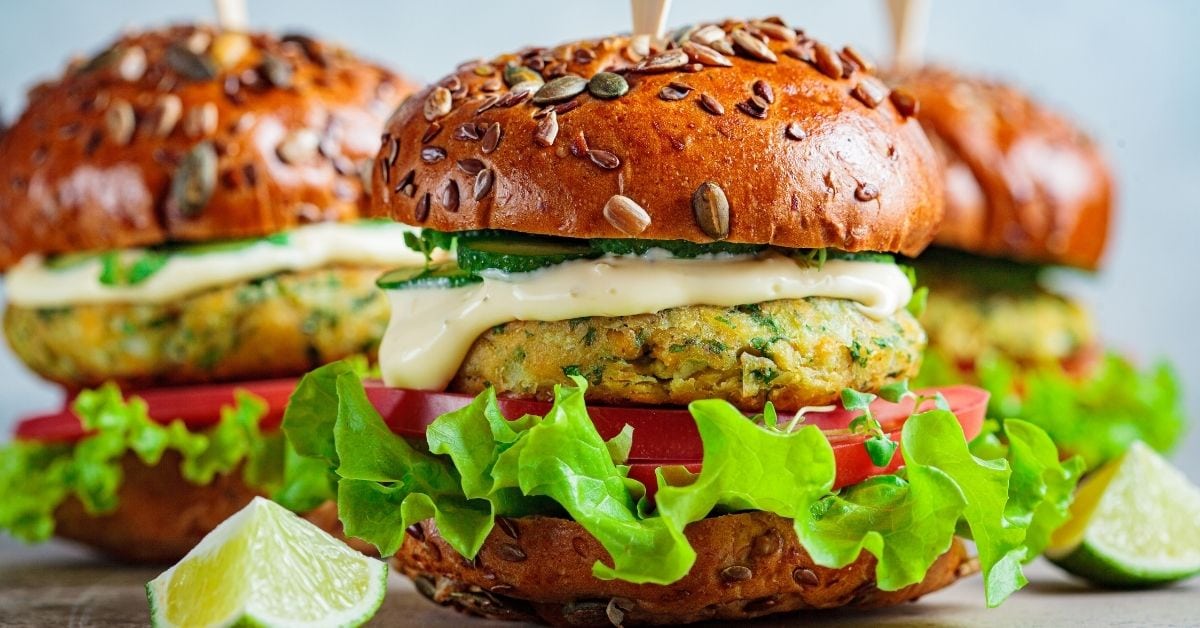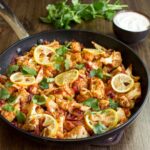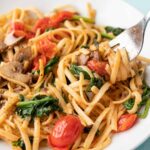Imagine vibrant, flavorful lunches that nourish your body and satisfy your taste buds, all while keeping your calorie count in check. This isn’t a dream; it’s the delicious reality of flexitarian eating. This guide unveils the secrets to crafting low-calorie flexitarian lunches, brimming with fresh ingredients and creative flavor combinations. Prepare to discover a world of satisfying and healthy meal options that effortlessly fit your lifestyle.
We’ll explore a diverse range of recipes, from quick and easy options perfect for busy weekdays to more elaborate creations for leisurely weekends. Learn how to maximize protein intake with legumes and tofu, while incorporating a rainbow of vegetables and healthy fats. We’ll even show you how to transform leftover dinners into exciting new lunches, minimizing food waste and maximizing flavor. Get ready to embark on a culinary journey that’s both healthy and incredibly satisfying.
High-Protein Flexitarian Lunch Options
Flexitarian diets, incorporating both plant-based and animal-based proteins, offer a versatile approach to healthy eating. High-protein lunches are particularly beneficial for maintaining satiety, supporting muscle growth and repair, and boosting overall energy levels throughout the afternoon. The following recipes highlight delicious and nutritious options that are both low in calories and rich in protein, making them ideal for a balanced flexitarian lifestyle.
The Importance of Protein in a Balanced Diet and the Role of High-Protein Lunches in Satiety and Overall Health
Protein is an essential macronutrient, acting as a building block for tissues, enzymes, hormones, and antibodies. Sufficient protein intake is crucial for maintaining muscle mass, supporting immune function, and regulating various bodily processes. High-protein lunches contribute significantly to satiety, meaning they keep you feeling full and satisfied for longer periods, reducing the likelihood of unhealthy snacking between meals. This prolonged feeling of fullness helps in managing weight and preventing overeating. Furthermore, adequate protein intake is vital for healthy aging, promoting strength and mobility as we age. These high-protein lunches provide a balanced approach, incorporating both plant-based and potentially animal-based sources, to ensure a complete amino acid profile.
Five High-Protein Flexitarian Lunch Recipes
A selection of five high-protein flexitarian lunch recipes, each providing a detailed step-by-step guide and an estimated calorie count, is presented below. These recipes emphasize lean protein sources and nutrient-rich vegetables for a balanced and satisfying meal.
- Lentil and Quinoa Salad (Approx. 350 calories): Imagine a vibrant salad brimming with earthy lentils, fluffy quinoa, chopped cucumbers and bell peppers, a sprinkle of toasted pumpkin seeds, and a light lemon-herb vinaigrette. Preparation: Cook lentils and quinoa separately according to package directions. Chop vegetables. Combine all ingredients in a bowl, toss gently with the vinaigrette, and enjoy the refreshing flavors and satisfying texture. The lentils and quinoa provide a powerful protein punch, complemented by the fiber and vitamins in the vegetables.
- Tofu Scramble with Spinach and Mushrooms (Approx. 280 calories): Picture a fluffy, savory scramble bursting with the earthy flavors of spinach and mushrooms, all complemented by the subtly sweet taste of crumbled tofu. Preparation: Crumble firm or extra-firm tofu into a pan. Sauté spinach and mushrooms until wilted. Add the crumbled tofu and cook until heated through. Season with turmeric, black salt (for an eggy flavor), and black pepper. Serve warm, perhaps with a side of whole-wheat toast (add approximately 50 calories if included).
- Chickpea Salad Sandwich on Whole Wheat (Approx. 300 calories): Envision a wholesome sandwich packed with a creamy chickpea salad, nestled between two slices of hearty whole-wheat bread. Preparation: Mash chickpeas with a fork. Add chopped celery, red onion, and a dollop of plain Greek yogurt or light mayonnaise. Season with salt, pepper, and a squeeze of lemon juice. Spread the mixture on whole-wheat bread.
- Black Bean Burgers on Whole Wheat Buns (Approx. 400 calories): Imagine two flavorful black bean burgers, juicy and satisfying, sandwiched between whole-wheat buns, adorned with crisp lettuce and tomato slices. Preparation: Mash black beans with breadcrumbs, chopped onion, and spices (cumin, chili powder). Form into patties and cook in a pan or bake until heated through. Serve on whole-wheat buns with your favorite toppings.
- Edamame and Avocado Salad with Hemp Seeds (Approx. 320 calories): Visualize a refreshing salad combining the vibrant green of shelled edamame with the creamy texture of avocado, all sprinkled with protein-rich hemp seeds. Preparation: Shell edamame and toss with diced avocado. Sprinkle with hemp seeds and a light dressing of lime juice and olive oil. The combination of edamame and avocado creates a unique flavor profile, enhanced by the nutty hemp seeds.
Flavorful & Satisfying Low-Calorie Flexitarian Salads

Creating delicious and healthy flexitarian lunches doesn’t require sacrificing flavor or satisfaction. Low-calorie salads, bursting with vibrant vegetables, lean protein, and healthy fats, offer a perfect solution for a light yet fulfilling midday meal. These salads are not only nutritious but also visually appealing, making lunchtime a delightful experience.
Benefits of Diverse Salad Ingredients
Incorporating a variety of vegetables and healthy fats significantly enhances both the nutritional profile and the gustatory experience of your salad. Different vegetables contribute diverse vitamins, minerals, and fiber, supporting overall health and well-being. Cruciferous vegetables like broccoli and kale offer significant amounts of vitamin C and antioxidants, while bell peppers contribute vitamin A and a vibrant color. Leafy greens such as spinach and romaine lettuce provide essential folate and other nutrients. Healthy fats, such as those found in avocados, nuts, and seeds, contribute to satiety, helping you feel fuller for longer and preventing overeating later in the day. They also aid in the absorption of fat-soluble vitamins and contribute to the overall creaminess and richness of the salad.
Three Low-Calorie Flexitarian Salad Recipes
The following recipes demonstrate how to create flavorful and visually stunning salads, each under 350 calories.
| Salad Name | Ingredients | Instructions | Approximate Calories |
|---|---|---|---|
| Mediterranean Quinoa Salad | 1 cup cooked quinoa, ½ cup chopped cucumber, ½ cup chopped tomatoes, ¼ cup crumbled feta cheese, ¼ cup Kalamata olives, 2 tbsp olive oil, 1 tbsp lemon juice, salt and pepper to taste. | Combine all ingredients in a bowl and toss gently. | ≈ 320 |
| Grilled Chicken and Avocado Salad | 4 oz grilled chicken breast (sliced), 2 cups mixed greens, ½ avocado (sliced), ¼ cup cherry tomatoes (halved), 1 tbsp toasted slivered almonds, 1 tbsp light vinaigrette. | Arrange greens on a plate, top with chicken, avocado, tomatoes, and almonds. Drizzle with vinaigrette. | ≈ 300 |
| Black Bean and Corn Salad with Lime Dressing | 1 cup black beans (canned, rinsed), 1 cup corn (canned or frozen, thawed), ½ red onion (thinly sliced), ½ cup chopped cilantro, 2 tbsp lime juice, 1 tbsp olive oil, ½ tsp cumin, salt and pepper to taste. | Combine all ingredients in a bowl and toss gently. | ≈ 280 |
Visually Appealing Salad Presentation
Creating a visually appealing salad involves careful consideration of color, texture, and arrangement. Think of your salad as a work of art. Start by using a variety of colorful vegetables – vibrant reds, oranges, greens, and purples create a dynamic and appetizing presentation. Varying textures, from crisp lettuce to creamy avocado and crunchy nuts, adds depth and interest. Arrange the ingredients strategically, creating height and visual layers. For instance, you can place taller ingredients, such as grilled chicken or avocado slices, in the center, surrounded by lower-lying greens and vegetables. A simple drizzle of dressing, artfully placed, can add a final touch of elegance. Consider using a contrasting-colored plate to further enhance the visual appeal of your salad. A white plate, for example, will make the colors of the salad pop, while a dark plate can create a more dramatic effect. The key is to create a balanced and harmonious composition that is both pleasing to the eye and delicious to eat.
Mastering the art of low-calorie flexitarian lunches is not just about calorie counting; it’s about creating a mindful and enjoyable eating experience. By embracing the flexibility of flexitarianism and understanding the principles of balanced macronutrients, you can craft lunches that are both nutritious and delicious. This guide provides the tools and inspiration to embark on this exciting culinary adventure, empowering you to create healthy, flavorful, and satisfying meals that fuel your day with vibrant energy and sustained satisfaction. So, dive in, experiment with flavors, and enjoy the delicious journey towards a healthier you!
FAQ Resource
What is flexitarianism?
Flexitarianism is a largely plant-based diet that occasionally incorporates meat, poultry, or fish. It offers the health benefits of vegetarianism with the flexibility to include animal products when desired.
How can I ensure my low-calorie flexitarian lunches are balanced?
Focus on incorporating a balance of complex carbohydrates, lean protein, and healthy fats in each meal. Think whole grains, legumes, lean protein sources (like tofu or chicken breast), and healthy fats (like avocados or nuts).
Are there any specific ingredients I should avoid when making low-calorie flexitarian lunches?
Minimize processed foods, sugary drinks, and excessive amounts of unhealthy fats. Focus on whole, unprocessed foods for maximum nutritional benefit.
How can I make my low-calorie flexitarian lunches more exciting?
Experiment with different herbs, spices, and sauces to add flavor and variety. Don’t be afraid to try new vegetables, grains, and protein sources.


